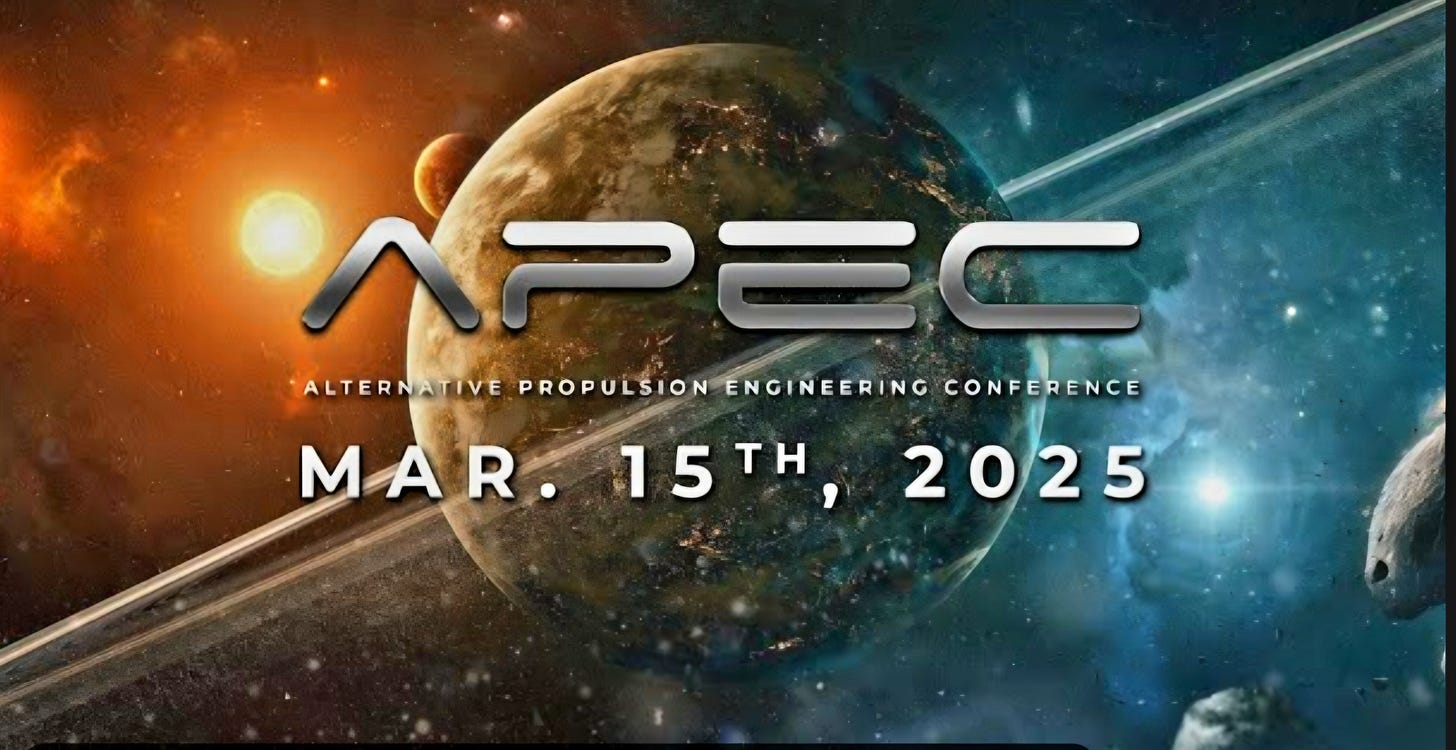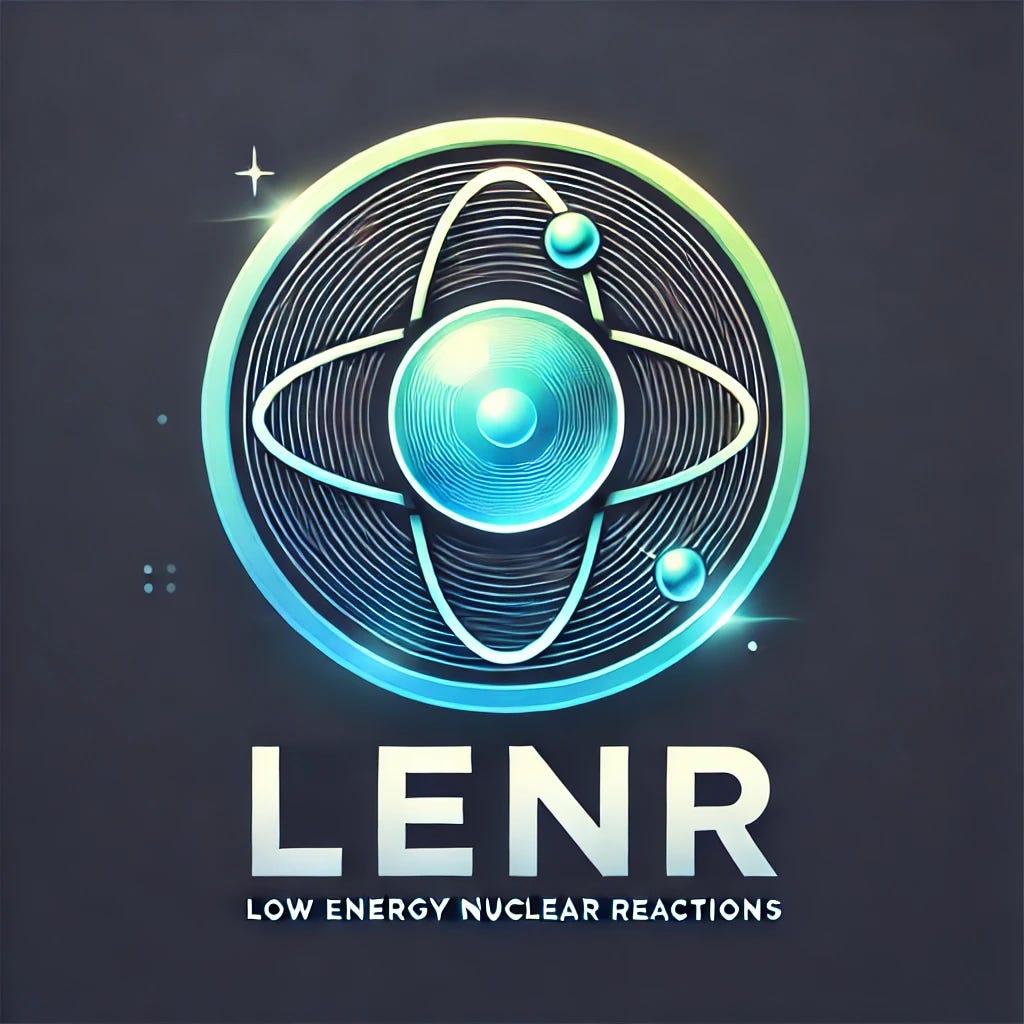LENR Revolution: The Energy Breakthrough That Cannot Be Ignored
Unlocking Unlimited Power with Low-Energy Nuclear Reactions
The Unfolding Energy Paradigm Shift
The Energy Revolution is Here: APEC on March 15th, 2025
“On March 15th, the future of energy, propulsion, and advanced materials will be unveiled at APEC. Matti Pitkänen will present a new experimental demonstration of LENR, proving once again that we are moving beyond fossil fuels. Bryan St. Clair will showcase his groundbreaking PIE 7 Inertial Propulsion Drive, a leap toward reactionless propulsion. Jarod Yates will analyze two separate samples of Art’s Parts, as well as material from St. Augustine and the Roswell bounce-site wreckage. Alongside these landmark presentations, lab partners will provide updates, and the event will conclude with an open discussion because the conversation about the future of energy and propulsion is only just beginning.”
Funding
For decades, mainstream physicists dismissed Low-Energy Nuclear Reactions (LENR) as an impossibility, an anomaly in nuclear physics. Yet, despite the skepticism, LENR has not only persisted but is now on the verge of becoming one of the most transformative energy breakthroughs in history.
If successfully commercialized, LENR has the potential to provide ultra-clean, nearly limitless energy without fossil fuels, radioactive waste, or billion-dollar nuclear infrastructure. This is not speculation. Today, NASA, Mitsubishi, Toyota, DARPA, Brillouin Energy, ENG8 Energy, and Clean Planet are actively developing LENR technology, investing millions in its research.
The implications are staggering. LENR will eliminate global fossil fuel dependence, decentralize energy production, and slash energy costs while unlocking advancements in transportation, desalination, and global energy security. But with such a monumental shift, resistance from entrenched industries and scientific institutions is inevitable.
LENR: From Cold Fusion Controversy to Scientific Validation
LENR's history is one of both scientific intrigue and controversy. It all began in 1989 when electrochemists Martin Fleischmann and Stanley Pons claimed to have achieved nuclear fusion at room temperature something previously thought impossible. Their experiment, using a palladium cathode submerged in heavy water, produced excess heat beyond what chemical reactions could explain, suggesting an unknown nuclear process at work.
The physics community swiftly dismissed their findings. Institutions like MIT and Caltech failed to replicate their results, and “cold fusion” became a scientific taboo. However, behind the scenes, a growing body of experimental evidence continued excess energy output, keeping LENR research alive.
Fast forward to today, and the landscape has completely shifted. Major scientific and corporate entities aggressively pursue LENR, investing in new theories, better materials, and more advanced testing methodologies to achieve repeatable, scalable energy production.
How LENR Works: A Different Path to Nuclear Energy
The traditional nuclear fusion a process that powers the sun requires temperatures of millions of degrees to force atomic nuclei together, overcoming their natural repulsion (the Coulomb barrier). LENR appears to achieve similar nuclear-level reactions without extreme heat or pressure.
Recent theories suggest that LENR works through mechanisms like:
Quantum Tunneling & Lattice Confinement – Nuclear reactions occur within tightly packed metal lattices (such as palladium or nickel), allowing hydrogen or deuterium atoms to interact in ways traditional models don’t account for.
Electron Screening Effects – Electrons cluster around atomic nuclei, reducing the energy required for fusion-like interactions.
Nuclear Transmutation – LENR has demonstrated the ability to change one element into another, challenging traditional nuclear models.
Key Breakthroughs and Active Players in LENR
1. NASA’s Lattice Confinement Fusion
NASA has conducted internal LENR research for nearly a decade and has demonstrated nuclear reactions within metal lattices where deuterium is densely packed. Their work, known as Lattice Confinement Fusion, could pave the way for compact LENR reactors for space missions and terrestrial energy solutions as they accelerate this R&D.
2. Brillouin Energy
This U.S.-based company is actively developing a commercial LENR reactor. Their system, which uses hydrogen-metal reactions, has demonstrated controlled energy output exceeding input energy a key milestone for commercialization. They've recently increased their lab by tenfold through significant funding.
3. Mitsubishi Heavy Industries & Toyota
Both companies have successfully observed nuclear transmutation, where elements change into others under LENR conditions. This has major implications not just for energy but also for nuclear waste remediation.
4. ENG8 Energy
A Gibraltar-based company making significant progress in solid-state LENR experiments, with third-party validation confirming excess heat production.
5. Clean Planet (Japan)
A Japanese firm dedicated to commercializing LENR for sustainable energy. Their research focuses on creating small-scale LENR power sources for industry and home use.
Why LENR Could Change the World
Ending Fossil Fuel Dependence
LENR could provide localized, carbon-free energy at a fraction of today’s costs, rendering coal, oil, and natural gas obsolete. Nations that rely on fossil fuel exports such as Saudi Arabia and Russia would experience a dramatic loss of economic and geopolitical power.
Unlimited, On-Demand Energy for Transportation
LENR-powered vehicles could eliminate the need for traditional refueling. In October 2024, Andrea Rossi’s E-Cat NGU demonstrated an electric vehicle powered indefinitely by LENR without external charging.
Solving Water Scarcity with Cheap Desalination
With virtually unlimited energy, LENR-powered desalination plants could provide abundant clean water to arid regions, transforming global agriculture and food production.
Radically Lowering Energy Costs
Once scaled, LENR devices could generate electricity for fractions of a cent per kilowatt-hour, undercutting fossil fuels, nuclear power, and even solar and wind energy.
Decentralizing Global Energy Production
Homes and businesses could operate independent LENR generators, reducing reliance on power grids and weakening centralized control over energy markets.
The $1.1 Billion LENR Investment Boom
Despite decades of skepticism, global LENR funding now exceeds $1.1 billion. Key funding sources include:
U.S. ARPA-E – Allocated $10 million in 2023 to LENR-related research, and funding projects at MIT, Stanford, and NASA.
Google & MIT – Google invested $10 million in 2019 to re-examine cold fusion experiments.
Brillouin Energy – Secured $60 million for hydrogen-metal LENR reactor development.
Japan’s NEDO Program – Mitsubishi & Toyota-backed LENR research totaling $20 million.
European Union – Funded LENR-based hydrogen-metal energy research through the CleanHME initiative.
Barriers to LENR’s Success
Threat to Multi-Trillion Dollar Energy Industries
Oil companies, nuclear plants, and governments with fossil fuel interests stand to lose everything if LENR replaces traditional energy.
Skepticism from Traditional Physicists
LENR challenges standard nuclear physics models. Many scientists hesitate to support it for fear of undermining their careers and, rather remain cemented in old physics, playing it safe.
The Risk of Intellectual Property Suppression
LENR is a highly disruptive technology. There are concerns that powerful interests may suppress research, patents, or funding to maintain control over global energy markets but with so many companies moving towards commercialization. Once the Cat is out of the bag it would be difficult to do akin to stopping AI, when Open AI launched Chat GPT 3 where efforts to suppress failed.
The Road to LENR Commercialization
The breakthrough moment for LENR will come when a company successfully delivers a commercial energy product that cannot be ignored. Key developments to watch:
Brillouin Energy’s LENR generator – Moving toward industrial applications.
ENG8 Energy’s over-unity results – Demonstrating repeatable, solid-state LENR power production.
If LENR is validated by NASA, DARPA, or the U.S. Navy, mainstream acceptance will follow.
Conclusion: The Dawn of a New Energy Era
LENR is no longer a fringe theory. It is an emerging technology with growing scientific backing, increasing corporate investment, and massive disruptive potential.
The first company to commercialize LENR will shape the future of energy. The days of fossil fuel dependency are numbered, and with LENR, humanity may finally unlock the limitless, clean power it has sought for centuries.
The only question is: Who will bring LENR to the world first with expectations of commercially viable products starting distribution this year?
Publisher Disclaimer:
This article is published for educational, and informational purposes only and does not constitute an endorsement, solicitation, or business offer by the publisher. Readers are encouraged to conduct independent research and due diligence before engaging in any business or investment decisions related to the subject matter.
No Financial Advice:
This publication does not provide financial, legal, or professional advice. Before making any financial or investment decisions, consult with a qualified professional.






